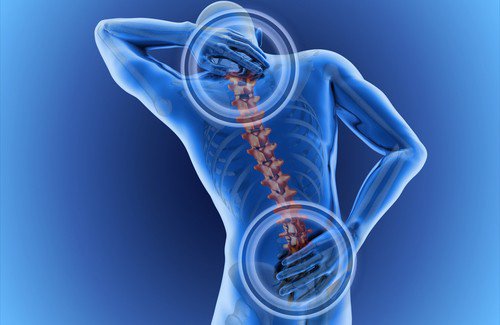Scoliosis: A Very Common Problem for Women


Written and verified by Doctor Carlos Fabián Avila
Scoliosis is a condition in which your spinal column has an abnormal curvature.
It’s likely that simply saying or reading this word makes you immediately think of children. This is a congenital problem that many young people in the world live with. And, for most cases, after using the classic orthopedic apparatus, it can be corrected.
Now, a good number of people in our society have some kind of scoliosis as a result of a slow osteoporosis process.
Women who have already reached menopause, are the ones who experience torsions and rotations in the curve of their spines. This happens to the point where x-rays show these very characteristic curves in the shape of a “C” or an “S.”
It can be said that this deformation is also painful and affects your postural axis. In some cases, it can be severe. It can lead to a striking deformity where the person sees their spine sink inward or where their pelvis slips off to one side.
This is a condition that isn’t talked about frequently. Today, we’ll take a look at its symptoms and treatment.
Scoliosis affects females at a higher rate

Congenital scoliosis also affects a slightly greater number of girls than boys.
In adulthood, women also have a higher incidence of bone and joint problems.
Also Read: 8 Foods You Should Avoid If You Have Joint Problems
Scoliosis is a condition that can appear with menopause.
A study carried out by the Johns Hopkins Hospital and published in the American Journal of Neuroradiology, has confirmed this data.
However, they also solidified some more interesting pieces of information.
One of them is the fact that a large number of scoliosis cases are light. On the other hand, only 17% were moderate or severe.
Why does scoliosis arise?
Scoliosis in adults is called degenerative scoliosis. The name alone gives some clues to the origin of this abnormal curvature in your spinal column.
- In general, scoliosis in adults appears markedly after 65 years of age.
- However, in women, it can start to show symptoms after 40 or 50 years of age.
- This is when the effects of menopause affect the quality, strength, and resistance of your bones and joints.
- At the same time, you should remember that osteoarthritis is localized in a special way in the smallest joints of your spine.
What are the symptoms of degenerative scoliosis?

At first, this light deformity isn’t too noticeable. Many people usually just think it’s a simple problem with ligaments.
However, little by little, you might come to feel some more noticeable symptoms. Numbness and a stabbing pain in your lower middle back are common. Your hands or legs might fall asleep more often than usual. Here are some other possible symptoms:
- Fatigue is common.
- Sometimes, it’s difficult to breathe.
- The pain is more intense in the mornings and when you’re sitting. In other words, resting makes the symptoms worse.
- The symptoms are more evident when the person sees the deformity for themselves: their spine is out of place, one shoulder raises higher than the other, a slightly hunched back, noticing they’ve lost a few inches of height…
Differences between degenerative scoliosis and juvenile scoliosis
Scoliosis in adolescents can appear between the ages of 10 and 18. Experts often still aren’t sure exactly why it happens. As we stated in the beginning, Scoliosis is, in the majority of cases, congenital.
See Also: Hypothroidism
In degenerative scoliosis, however, we do know the cause. What is still more important: the misalignment of the spine tends to grow by at least 1 or 2 grades each year.
Treatment for scoliosis in adults

Surgical treatment isn’t always possible or recommended. In such cases, the patient needs to focus on the problem from a multidimensional point of view. They do this with the help of the right professionals.
To do this, you need to make use of the following treatments.
- Pharmacological: There are many medications that relieve the pain. These include the classic ibuprofen or acetaminophen. These should reduce the level of inflammation in your joints.
Epidural injections are another option.
- Physical therapies for scoliosis in adults. In this case, we have many types of physical therapy such as aquatic therapies, chiropractic therapies, or alternative medicine.
The best thing is to not just stay with one treatment. To increase your quality of life when you suffer from scoliosis you need to listen to everything that good medical professionals tell you.
This way, you can use more new therapies and strategies that help you to have a better quality of life as much as is possible.
All cited sources were thoroughly reviewed by our team to ensure their quality, reliability, currency, and validity. The bibliography of this article was considered reliable and of academic or scientific accuracy.
- Álvarez García de Quesada, L. I., & Núñez Giralda, A. (2011). Escoliosis idiopática. Pediatria de Atencion Primaria. https://doi.org/10.4321/S1139-76322011000100014
- Conejero Casares, J. A. (2010). Escoliosis. Pediatria Integral. https://doi.org/10.1016/S1293-2965(02)71927-0
- Barreras, T. (2011). Escoliosis: concepto, etiología y clasificación. Ortho-Tips. https://doi.org/10.1016/0950-0618(95)00018-6
- Pantoja, T. S., & Chamorro, L. M. (2015). Escoliosis en niños y adolescentes. Revista Médica Clínica Las Condes. https://doi.org/10.1016/j.rmclc.2015.02.011
- Touzeau, C., Larroque, A., Marty, C., & Biot, B. (2002). Escoliosis Paralíticas. EMC – Kinesiterapia – Medicina Física. https://doi.org/10.1016/S1293-2965(02)71931-2
This text is provided for informational purposes only and does not replace consultation with a professional. If in doubt, consult your specialist.








